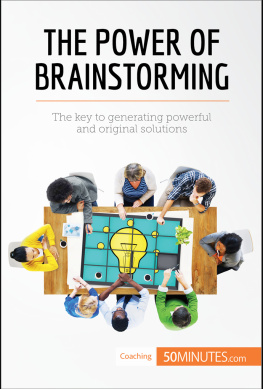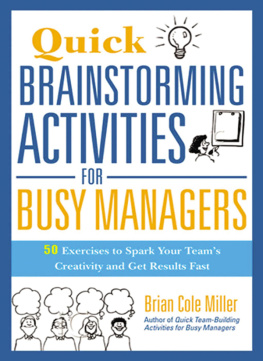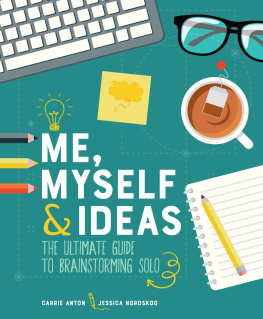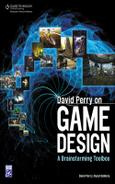Copyright
Morgan Kaufmann is an imprint of Elsevier
The Boulevard, Langford Lane, Kidlington, Oxford, OX5 1GB, UK
225 Wyman Street, Waltham, MA 02451, USA
First published 2013
Copyright 2013 Elsevier Inc. All rights reserved
Portions of are used with permission and have been updated and expanded upon from User Experience Re-Mastered.
No part of this publication may be reproduced or transmitted in any form or by any means, electronic or mechanical, including photocopying, recording, or any information storage and retrieval system, without permission in writing from the publisher. Details on how to seek permission, further information about the Publishers permissions policies and our arrangement with organizations such as the Copyright Clearance Center and the Copyright Licensing Agency, can be found at our website: www.elsevier.com/permissions.
This book and the individual contributions contained in it are protected under copyright by the Publisher (other than as may be noted herein).
Notices
Knowledge and best practice in this field are constantly changing. As new research and experience broaden our understanding, changes in research methods, professional practices, or medical treatment may become necessary.
Practitioners and researchers must always rely on their own experience and knowledge in evaluating and using any information, methods, compounds, or experiments described herein. In using such information or methods they should be mindful of their own safety and the safety of others, including parties for whom they have a professional responsibility.
To the fullest extent of the law, neither the Publisher nor the authors, contributors, or editors, assume any liability for any injury and/or damage to persons or property as a matter of products liability, negligence or otherwise, or from any use or operation of any methods, products, instructions, or ideas contained in the material herein.
British Library Cataloguing-in-Publication Data
A catalogue record for this book is available from the British Library
Library of Congress Cataloging-in-Publication Data
A catalog record for this book is available from the Library of Congress
ISBN: 978-0-12-407157-5
For information on all Morgan Kaufmann publications visit our website at store.elsevier.com
This book has been manufactured using Print On Demand technology. Each copy is produced to order and is limited to black ink. The online version of this book will show color figures where appropriate.

Introduction
If I have a thousand ideas and only one turns out to be good, I am satisfied.
Alfred Nobel
Most projects spend considerable resources generating and organizing ideas throughout the product cycle. The three chapters in this book describe effective and efficient methods for generating ideas through speaking, writing, and drawing.
in this book focuses on group brainstorming, perhaps the most well-known method for ideation. Brainstorming is often portrayed as simple with only a few rules, but as you read through the first chapter, you will discover that brainstorming is a complex social process requiring knowledge of social psychology, motivation, and corporate culture. There are many variations on brainstorming that can be useful in different contexts, like the nominal group technique, which is useful when you want to minimize status differences, and free listing, which can be used to generate ideas with very large groups (as well as with a single individual) in minutes. This chapter provides many tips on how you can increase the number of ideas that emerge from brainstorming sessions.
describes a method called brainwriting. Brainwriting is a variation on brainstorming, in which each person in a group writes ideas on paper and then passes the paper to another who reads the first set of ideas and adds new ones. Brainwriting requires little training and could be considered a discount ideation method. Because there is no group where participants shout out ideas, strong facilitation skills are not required for the leader of a brainwriting session. The output of ideas from brainwriting can often exceed the output of group brainstorming in a shorter period of time, so the return on investment (in this case, the number of ideas per unit time) is relatively high compared to traditional group brainstorming. Brainwriting is appropriate in cultures where there is some hostility (covert or overt) or where participants may be reluctant to express ideas that go against the ideas of more senior colleagues. It is also useful when you have limited time with a group.
covers braindrawing, a method of visual brainstorming that you can use to generate ideas for icons, graphics for product branding, user interface layouts, or web page designs. In braindrawing, you present a group with a visual problem like generate ideas for an icon to represent the function insert link, and then ask each person to sketch ideas and pass them on to someone else who can add a new idea or embellish previous ideas. Good ideas are extracted from braindrawings and applied in the product.
The methods described in this book provide ways to generate, present, and evaluate ideas and begin building a strong foundation for product success.
Chapter 1
Brainstorming
Overview of Brainstorming
When Should You Use Brainstorming?
Strengths
Weaknesses
Procedures and Practical Advice on Brainstorming
Planning the Brainstorming Session
Conducting a Brainstorming Session
After the Brainstorming Session
Variations and Extensions to Brainstorming
Buzz Sessions (Also Known as the Philips 66 Technique)
Free Listing
The Nominal Group Technique
Reserve (Negative) Brainstorming
Delphi Method
Remote Brainstorming
Major Issues in the Use of Brainstorming
What Is Quality in Brainstorming?
How Many Participants Should I Have in Brainstorming Sessions?
Social Issues that could Affect Idea Generation in Group Brainstorming
Data Analysis
Types of Data
Analysis Techniques
What Do You Need for Brainstorming?
Personnel, Participants, and Training
Hardware and Software
Documents and Materials
Alternate names: Brainstorming, creative thinking, group brainstorming, group ideation, interactive brainstorming.
Related methods: Affinity diagramming, braindrawing, brainwriting, buzz group, Delphi technique, individual brainstorming, KJ method, metaphor brainstorming, nominal group technique, remote brainstorming, unstructured brainstorming, and visual brainstorming.
1.1 Overview of Brainstorming
Brainstorming is an individual or group method for generating ideas, increasing creative efficacy, or finding solutions to problems. This chapter focuses on group brainstorming where participants generate ideas on a particular topic or problem in a nonjudgmental environment following a set of ground rules about appropriate behaviors. is a method scorecard that highlights the relative investment needed to conduct a group brainstorming session and when brainstorming is most useful.










